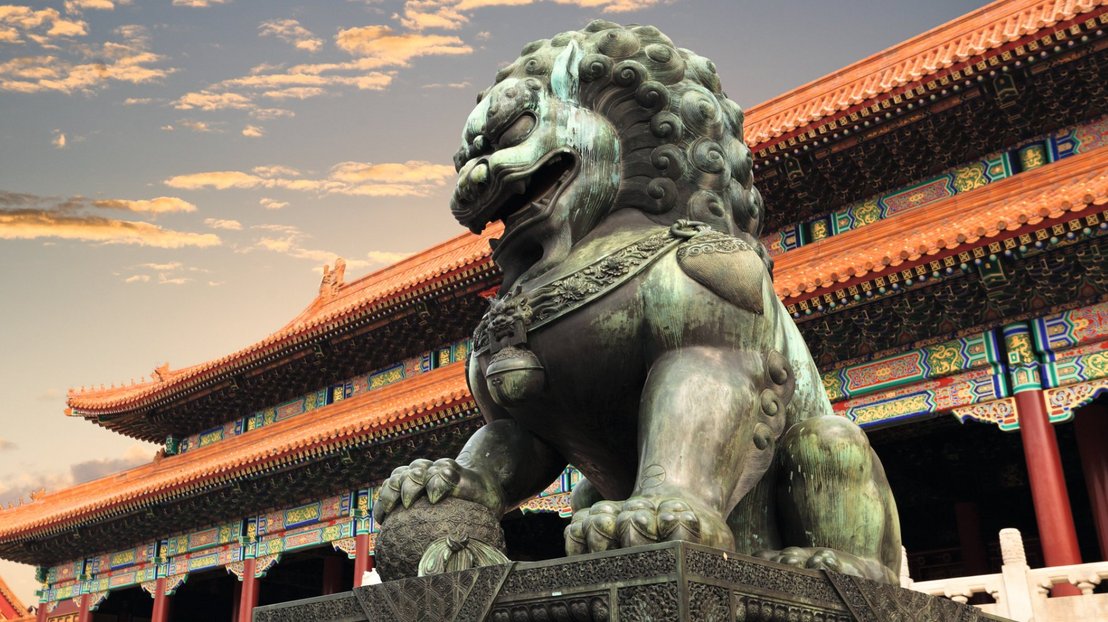
The 10 most spoken dialects of the Chinese language

1. Mandarin 官 話
With more than 1.1 billion speakers, it is the most widely spoken form of Chinese and the language with the most native speakers and speakers in the world. Mandarin is very different from southern Chinese languages such as Cantonese or Wu, as they are not dialects of Mandarin but Chinese languages in their own right. This makes Mandarin by far the largest of the ten Chinese dialect groups; it is spoken by 70% of all Chinese in a large geographical area.
Today, the official language in mainland China and Taiwan is called Putonghua (普通話), which evolved from Beijing Mandarin and is known in English as Mandarin or Standard Chinese. It is the most widely spoken language in the Greater China region and one of the six official languages of the United Nations.
2. Wu 吳 語
It is also one of the most important dialects of Chinese. The name Wu corresponds to the name of one of the three kingdoms into which China was divided at the end of the Han Dynasty and whose territory roughly corresponded to today's Wu-speaking area. With 81.8 million speakers, Wu is the second most widely spoken dialect of Chinese after Mandarin. It is the variant of Chinese spoken in Shanghai, most of Zhejiang province, the southern part of Jiangsu province and parts of Anhui and Jiangxi.
Speakers of the Wu dialect sometimes inaccurately refer to their mother tongue as "Shanghainese" (上海话 / 上海話) when introducing themselves to foreigners. The northern Wu languages are mutually intelligible, but the southern Wu languages are not.
3. Cantones 廣 東 話
It is the traditional "prestige" variety of the Yue Chinese dialect group (spoken by the most respected people in Canton province), which has more than 80 million native speakers. Although the term Cantonese refers specifically to the "prestige" variety, it is often used to refer to the entire subgroup of Yue Chinese, including related but largely unintelligible languages and dialects. In common usage, Standard Cantonese is often referred to simply as "Cantonese".
Cantonese is considered an essential and inseparable part of the cultural identity of its native speakers in much of Southeast China, Hong Kong and Macau, as well as in overseas communities. In mainland China, it is the lingua franca of Guangdong province (as the majority language of the Pearl River Delta) and neighbouring areas such as Guangxi. It is also the predominant and official language in Hong Kong and Macau. Cantonese is also widely spoken among overseas Chinese in Southeast Asia (especially in Vietnam and Malaysia, and to a lesser extent in Singapore and Cambodia) and throughout the Western world.
4. Min 閩 語
With 60 million speakers, it is one of the most important Sinitic languages (a subfamily within the Sino-Tibetan languages). Min is the fourth most widely spoken dialect of Chinese after Mandarin, Wu and Cantonese. It is spoken by about 60 million people, mainly in Taiwan and Fujian province. The form of Southern Min spoken in Taiwan is sometimes referred to as Taiwanese, although it differs little from Southern Min, which is spoken in the Xiamen region of southern Fujian.
Many Min languages have retained notable features of the Old Chinese language, and there is linguistic evidence that not all Min varieties are directly descended from the Middle Chinese of the Sui-Tang dynasties. Min languages are believed to have an important linguistic substrate from the languages of the peoples of the region before their linguistic and cultural assimilation into Chinese culture. Min is also the most widely spoken Chinese dialect among Chinese communities in Southeast Asia, particularly in Singapore and Malaysia.
5. Jin 晉 語
It is a proposed group of varieties of the Chinese language spoken by some 63 million people in northern China, including most of Shanxi province, much of Inner Mongolia, and adjacent areas of Hebei, Henan and Shaanxi provinces. The status of the Jin dialect is disputed among linguists; some prefer to include it with Mandarin, while others consider it a closely related but separate sister group.
Until the 1980s, Jin dialects were consistently counted as part of Mandarin Chinese. In 1985, however, Chinese linguist Li Rong proposed that the Jin dialect be considered a separate high-level dialect group, similar to Yue or Wu. His main criterion was that Jin dialects had retained the entry tone (one of the four syllabic tones of Middle Chinese phonology) as a separate category, still marked as in Wu dialects, but different in this respect from most other Mandarin dialects. Today, some linguists have adopted this classification, while others still consider it part of Mandarin.
6. Xiang 湘 语
The Xiang dialect, also known as the Hunan dialect, belongs to the Chinese family of Sino-Tibetan languages. The Xiang language is spoken by more than 38 million people in China, mainly by the inhabitants of Hunan Province and the Xiangjiang River Basin and its tributaries.
Due to the widespread influence of Mandarin dialects, it is difficult to distinguish the Xiang dialects. Yuan Jiahua divided the Hunan dialect into an old and a new faction based on the presence or absence of sonorous initials. He considers the Hunan dialects that have retained sonorant initials to belong to the old Xiang category, while those that have lost some of the conservative phonological features belong to the new Xiang category.
7. Hakka 客 家 话
With 47.8 million native speakers, it is a dialect spoken mainly in southern China by the Hakka (客家人) people. Due to its main use in isolated and scattered regions where communication is limited to the local level, the Hakka dialect has developed numerous varieties or dialects spoken in various provinces such as Guangdong, Jiangxior Hainan, but also in Taiwan, Singapore, Malaysia, Thailand and Indonesia.
In mainland China, Hakka tend to speak Mandarin or Cantonese due to increasing cultural and economic exchanges between different regions, and Hakka is not used for teaching in traditional areas. The younger generation was educated in Mandarin from childhood, so the linguistic heritage is not optimistic. Today, the proportion of the younger generation speaking Hakka is decreasing, and some people have switched to speaking the dominant languages, Mandarin and Cantonese. Orally transmitted traditional Hakka nursery rhymes are rarely recited in full.
In addition, in a small part of the Pearl River Delta, Hakka dialects exist in individual villages and towns in the form of "dialect islands". Under the influence of Cantonese and Mandarin, some Hakka home languages have been transformed into Cantonese or Mandarin. Meixian dialect is a Hakka dialect spoken in Meizhou, Guangdong province, and has always been recognised as a representative of the Hakka dialect. Meixian dialect or Meizhou Hakka dialect is the representative dialect or standard pronunciation of Hakka dialect in linguistics.
8. Gan 贛 語
With 48 million speakers, the Gan dialect is a Sinitic language spoken by many residents of Jiangxi province in China, as well as significant populations in surrounding regions such as Hunan, Hubei, Anhui and Fujian. The Gan dialect belongs to the Sinitic languages within the Sino-Tibetan language family, and the Hakka dialect is the Chinese variety closest to Gan in terms of phonetics. There are several Gan dialects, with the Nanchang dialect usually considered representative.
The gender of Gaelic has always been controversial in academia and can be divided into two categories of opinion. The first view is that Gan is a "dialect" of Chinese, mainly held in mainland Chinese academic circles due to historical, cultural and other factors. In addition, many people who use the Gan dialect believe that the dialect belongs to a type of Chinese. This is mainly due to academic propaganda, political considerations, national sentiments and many other factors, but also because Gan and Mandarin have more similarities compared to Cantonese and Hokkien. The second view is that Gan itself is a language and foreign linguists study Gan and other Chinese languages as one language when they study Chinese linguistics.
From a linguistic point of view, any language that cannot communicate with each other should be classified as another language. However, there are significant differences in pronunciation, vocabulary and grammar between Gan and other Chinese dialects, and the interlocutors cannot communicate in spoken language. Therefore, some scholars believe that these different Chinese dialects basically represent the relationship between "language and language" rather than between "dialect and dialect".
9. Hui 徽 话
Also known as Huizhou (徽话), which literally means "Huizhou language", it is a Sinitic language spoken by about 4.2 million people. Its status is disputed among linguists: some assign it to the Wu dialect, which is part of the Gan dialect, while others consider it a separate dialect branch of Chinese. The main speakers are the Hui ethnic group, from which the name is derived.
Compared to other Chinese languages, Hui is only spoken in a small area. In the historical region of Huizhou, in about a dozen mountains in southeastern Anhui, and in the neighbouring regions of Zhejiang and Jiangxi. Despite its small geographical distribution, the Hui dialect has a high degree of internal variation. For this reason, bilingualism and multilingualism are common among Hui speakers. As with all other varieties of Chinese, there is still much controversy over whether Hui is a language or a dialect.
10. Ping 平 话
With 7 million speakers, it is a Sinitic language spoken mainly in parts of the Guangxi Zhuang Autonomous Region, with some speakers in the Hunan, Yunnan and Guangdong regions. The Ping dialect is a commercial language in some areas of Guangxi, where it is spoken as a second language by speakers of the Zhuang languages.
It is common to take the city of Liuzhou as the boundary and divide Ping into Guibeiping (桂北平话) and Guinanping (桂南平话). The phonetic system of the Guangxi-Guibeiping dialect differs from that of the Southwest Mandarin, North Guangxi-Xiang, Hakka, Cantonese and Fujian dialects, and has many blends but few similarities. Cantonese strongly influences the Guinanping dialect in pronunciation, vocabulary and grammar, and there are few internal differences. Guinanping is traditionally classified as Cantonese, but in 1987 Chinese social sciences classified Pinghua as a Chinese dialect that does not belong to Cantonese.
Conclusion
Compared to other languages, Chinese has a considerable number of dialects and language variations (most of which are incomprehensible to each other), due to the country's complicated and vast geography, as well as the various dynasties that have existed over the millennia and preserved their language, traditions and customs.
If you want to learn Chinese, you will most likely learn Mandarin Chinese, as it far surpasses all other Chinese languages and is also institutionalised as the official language of the People's Republic of China.
Do you know anyone who speaks these Chinese dialects, which is your preferred Chinese variant, and do you think the other Chinese dialects like Mandarin should be made official? Subscribe to our newsletter or download our 2022 catalogue for more content and special offers!







